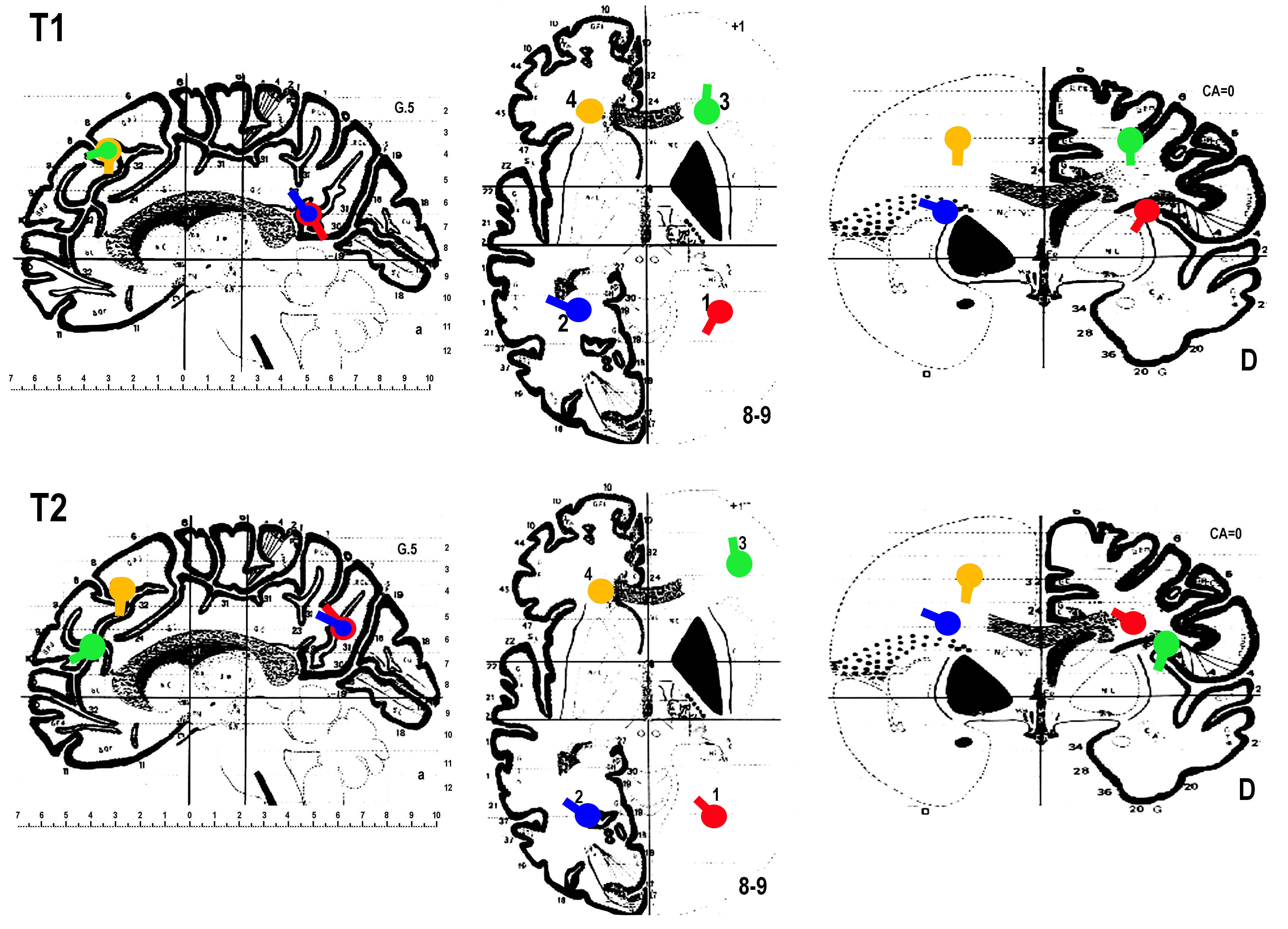|
Jemel, B., Oades, R. D., Oknina, L., Achenbach, C. & Röpcke, B., Frontal and temporal lobe sources for a marker of controlled auditory attention: the negative difference (Nd) event-related potential . Brain Topography, 15, (4) 249-262 . - (request a pdf copy). In accord with our understanding of journal policy,
we present the pre-publication
text (view). Introduction: (We have previously reported on a) the normal topography of Nd (Oades et al., 1995) and its development over childhood and adolescence (Oades et al., 1997), and b) on an asymmetric Nd topography in paranoid and non-paranoid subgroups of patients with schizophrenia. While the differences can appear to indicate a reduced amplitude (Oades et al., 1994), they may reflect changes of the latency of regional activation (Oades et al., 1996). Methods:
Fig. 1 SCD maps
at 3 time points in the latency window. . Results:
Conclusions: Frontal Nd sources were more dorsal on the right and more rostral on the left than MMN dipoles (automatic change detection) reported for the right inferior frontal and left anterior cingulate regions. Temporal lobe sources were active later than MMN and frontal Nd dipoles, and lay more posterior and medial than MMN dipoles. We propose the following potential sequence
of activation (for auditory tones) after the initial N1
excitatory response: For noting the "changed stimulus" - an
MMN is initiated in the superior temporal gyrus (perceptual template
for standards), followed by deviant registration information passed
to the right inferior frontal (for a potential switch) and left cingulate
(conflict/priority resolution). For noting the "changed relevance"
Nd is initiated in the right medial frontal region (close to the MMN
dipole), and the information is passed to left superior frontal regions
for planning response, and posterior temporal comparator processes. |

